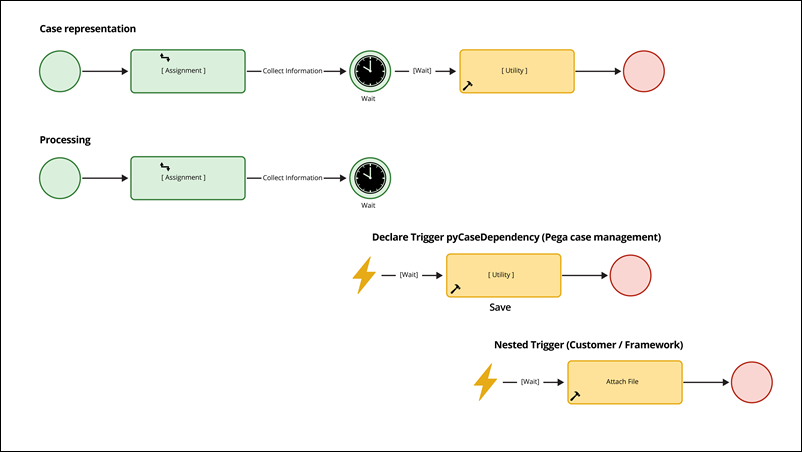Declare Trigger rules
To define correlations between events in your case types, create Declare Trigger rules to cause an activity to run when a specified event takes place in a case. By creating Declare Trigger rules, you automate your business processes and flexibly respond to dynamic business needs.
Declare Trigger rules are a part of the declarative rules that implement the declarative programming paradigm in Pega Platform.
For each Declare Trigger rule, Pega Platform monitors database operations for objects that you specify as the Applies To class, and concrete classes that are derived from that class, such as a class that stores your case type. When a change affects a specified property, Pega Platform uses the Change Tracking feature to monitor updates to the property values and run triggers accordingly.
- Page Save
- In context
- In background
- Page Delete
- Page Commit
Nested Declare Trigger rules
To resolve complex use cases, you can nest a Declare Trigger rule within another Declare Trigger rule. Nested Declare Trigger rules work in the context of the other Declare Trigger rule. For example, you can define a Declare Trigger rule that sends an email to a CSR when a customer updates their address details. Then you can create and nest another Declare Trigger rule that creates a document with the updated details after the case moves to the next stage. You can only nest rules of the Save and Save and types that run immediately. Nesting rules in the context of the Commit type rules might result in adding an excessive number of deferred operations during one database transaction. To avoid recursion during nesting of declare triggers, you can only nest a trigger in a trigger that is not already running on a page in the execution stack. For example, if a Page A save leads to a save of Page B and a trigger on Page B again leads to a save of Page A, the declare trigger does not run again on the Page A save.
Figure: Triggering events in a case

To nest triggers, set the value of the declaratives/nestedTriggersEnabled dynamic system setting to true. For more information, see Creating a dynamic system setting.
Applying Declare Trigger rules
Immediately after you save the rule, your application runs a Declare Trigger rule according to your provided configuration.